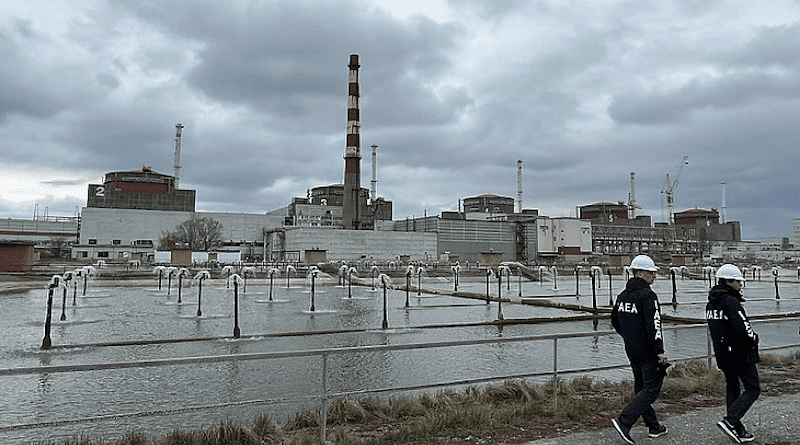
The head of the UN nuclear watchdog agency reiterated that attacks against nuclear power plants in Ukraine are “an absolute no go”, following direct military action targeting the Zaporizhzhya Nuclear Power Plant (ZNPP) on Sunday.
Rafael Grossi, Director General of the International Atomic Energy Agency (IAEA), said the targeting marked a “major escalation” in the level of danger facing the power plant.
It was the first time since Russia’s full-scale invasion of Ukraine in November 2022 that the ZNPP – Europe’s largest nuclear power plant – has been directly targeted. It has been occupied by Russian forces since the early weeks of the fighting.
As of Sunday, while there were “no indications” of damage to critical nuclear safety or security systems, the strikes were “another stark reminder” of the threats to the power plant and other nuclear facilities during the ongoing war, IAEA said.
“Although the damage at unit 6 has not compromised nuclear safety, this was a serious incident that had the potential to undermine the integrity of the reactor’s containment system,” Director General Grossi said.
‘A major escalation’
“This is a major escalation of the nuclear safety and security dangers facing the Zaporizhzhya Nuclear Power Plant. Such reckless attacks significantly increase the risk of a major nuclear accident and must cease immediately,” Mr. Grossi said.
Reiterating that no one can “conceivably benefit” or get any military or political advantage from attacks against nuclear facilities, he stressed such attacks are “an absolute no go”.
“I firmly appeal to military decision makers to abstain from any action violating the basic principles that protect nuclear facilities.”
At least one casualty
According to IAEA, after receiving information from the ZNPP about the drone attacks, its experts stationed at the site went to three affected locations.
They were able to confirm the physical impact of the drone detonations, including at one of the site’s six reactor buildings where surveillance and communication equipment appeared to have been the target.
While they were at the roof of the reactor, Russian troops engaged what appeared to be an approaching drone, the agency said, adding that this was followed by an explosion near the reactor building.
“The IAEA team reported that they observed remnants of drones at this and two other impact locations at the site. At one of them, outside a laboratory, they saw blood stains next to a damaged military logistics vehicle, indicating at least one casualty,” it said.
IAEA experts further reported hearing explosions and rifle fire on the site throughout the day. The team also heard several rounds of outgoing artillery fire from near the plant.
No comments:
Post a Comment